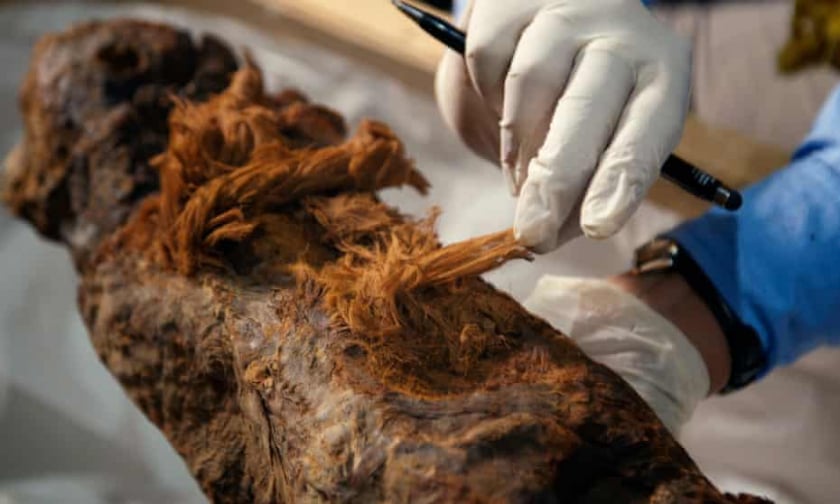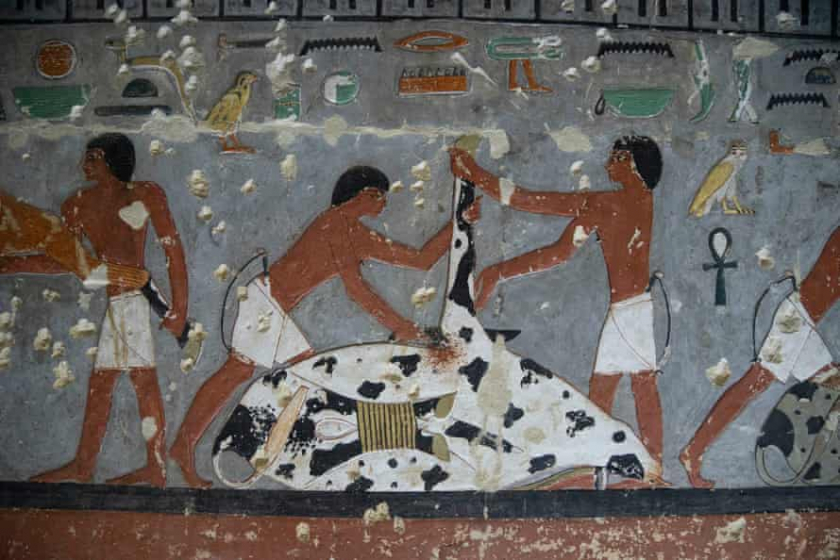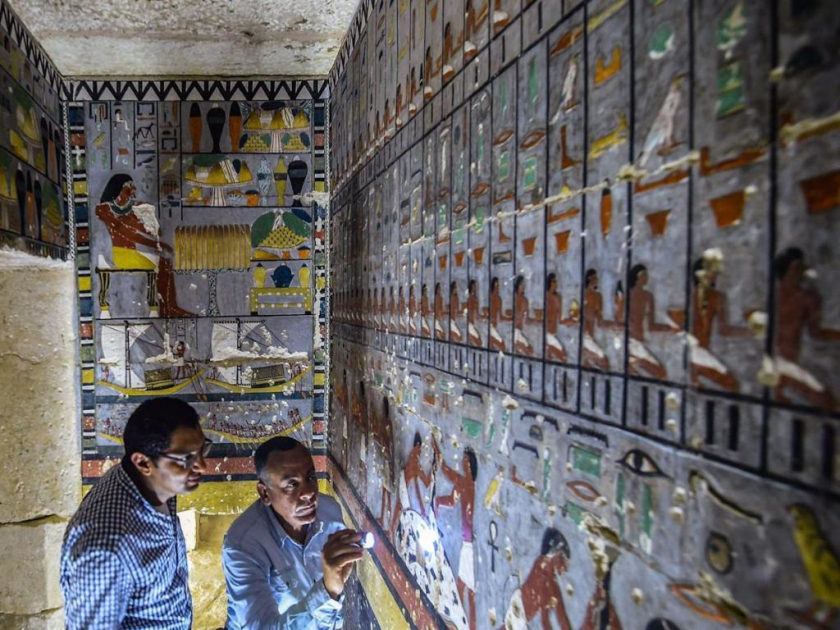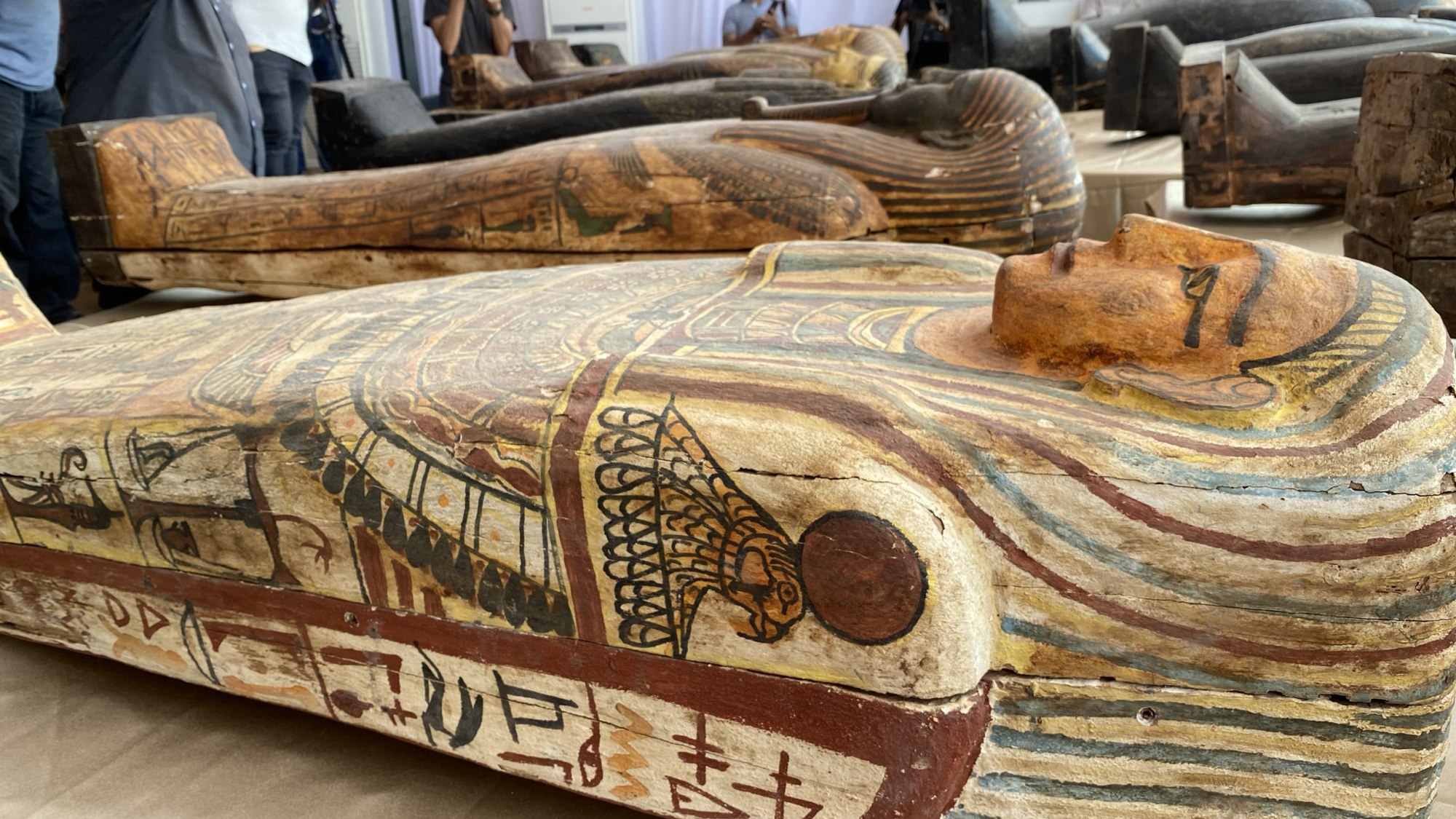The new discovery is the result of an analysis of the carefully preserved mummy of a high-ranking Egyptian nobleman named Khuwy, discovered in 2019. According to the study, the mummy dates back to the Old Kingdom, proving that Egyptian mummification techniques were very advanced about 4,000 years ago.
Professor Salima Ikram, head of Egyptology at the American University in Cairo and a leading expert on the history of mummification, told The Observer: “If this is indeed an Old Kingdom mummy, all the history books on mummification need to be completely revised.”

A scientist studies Khuwy's mummy. - Photo: Ian Glatt/National Geographic/Windfall Films
“Until now, we thought the mummification process in the Old Kingdom was relatively simple, with basic (though not always successful) drying methods, no brain removal, and only occasional removal of internal organs,” Salima added.
In fact, the mummification process was extremely sophisticated, ancient embalmers bathed the body in the most expensive resin to preserve the flesh before wrapping it, which was then soaked in more resin and wrapped in the highest quality bandages.

Wall painting at Khuwy's tomb. - Photo: Ian Glatt/National Geographic/Windfall Films
This is one of the major discoveries that will be revealed in the National Geographic documentary series "Egypt's Lost Treasures". The film is produced by Windfall Films and the cameras will follow international archaeologists during excavations in Egypt. The mummy discovery will be shown in episode 4 - "Rise of the Mummy", which will air on November 28. Professor Salima Ikram also appears in this episode.

The National Geographic film crew followed archaeologists for a long time to the place where Khuwy's mummy was found - a lavish tomb in the Saqqara necropolis. - Photo: AFP/GETTY
"They knew the pottery in the tomb was from the Old Kingdom, but Ikram initially didn't believe the mummy was from that period because it was so well preserved. They didn't think the mummification process was that advanced at the time," said Tom Cook, producer of Windfall Films. "But as she researched, she began to believe it."
"It was extraordinary," Ikam said in the documentary. "The only time I've ever seen linen of such good quality was from the 21st Dynasty." The 21st Dynasty, which was ruled by Egyptian pharaohs, was 1,000 years after Khuwy's time, about 3,000 years ago.






























